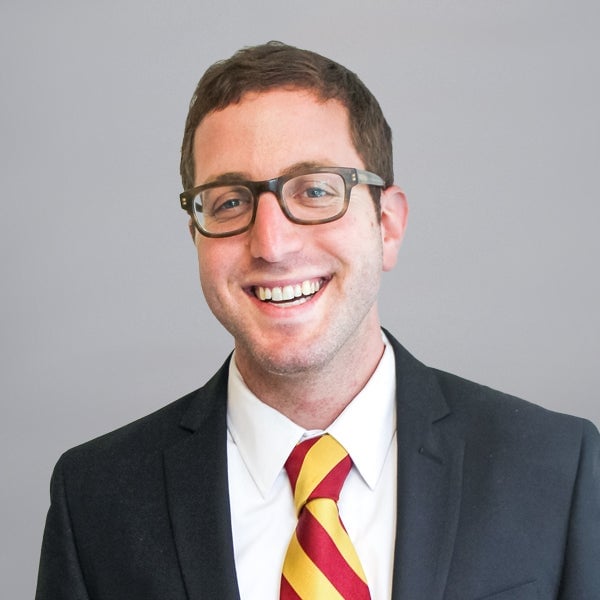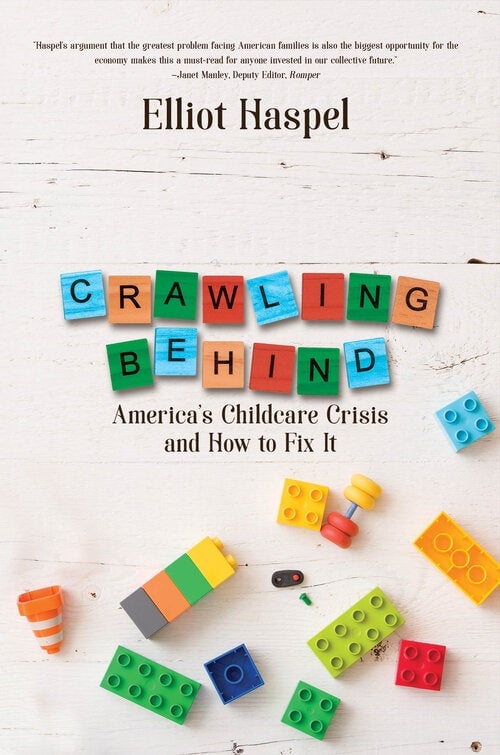America’s childcare system is broken. Here’s one way to fix it
Childcare in the US is unaffordable, inaccessible, and over-subscribed. Families spend more than the average annual in-state college tuition to put their child in full-time center-based care, and yet the people who care for those children—early childhood educators and other staff—are paid less than tree trimmers and janitors. This pushes quality downwards, even though science tells us that the years between birth and five are crucial for children to develop into well-adjusted and healthy adults.


Childcare in the US is unaffordable, inaccessible, and over-subscribed. Families spend more than the average annual in-state college tuition to put their child in full-time center-based care, and yet the people who care for those children—early childhood educators and other staff—are paid less than tree trimmers and janitors. This pushes quality downwards, even though science tells us that the years between birth and five are crucial for children to develop into well-adjusted and healthy adults.
In a word, the system is broken.
While there are plenty of people who will tell you this, there are few who will provide concrete solutions to fix things. Elliot Haspel, a former fourth grade teacher and education policy expert, is one of them. In his new book, Crawling Behind: America’s Childcare Crisis and How to Fix It, Haspel argues that childcare should be treated as a public good. He advocates for every family in America to receive a yearly $15,000 credit to invest in the care option of their choice—including staying at home with their child if they choose.
Quartz spoke with Haspel about the mechanics of his plan for a Universal Child Development Credit, and about why its details matter less than the message it sends: That society should invest in the young at a time when they are most primed to learn. This conversation has been condensed and edited for clarity.
Quartz: The central question of your book is: should childcare be free for all families? You say yes. Why?
Haspel: Childcare falls into the category of a public or common good. As a society, we decide that certain things have so much benefit that we’re going to make them completely free to the end user regardless of their income level, other than the taxes that they pay. Examples of this include fire departments, roads, and perhaps most relevantly, in the public K-12 schools.

For a long time, childcare has not been considered one of them. There are historical reasons for that, but it doesn’t hold up anymore, because we know now that child development starts at birth, really prenatally, and it’s a cumulative process, so you’re building quite literally the foundational brain architecture for everything you want from children later in life.
The second thing is that we as a society have decided that mothers should get to choose whether or not they work outside the home when they have young children. And at this point, the reality is that two-thirds of all young children have all of their available parents in the workforce. And in the face of those two facts, we’re facing an entirely broken childcare marketplace.
Why is childcare so expensive in the US?
There are fixed costs when it comes to childcare that you actually want to be expensive: number one is the adult-to-child ratio. What we know about child development, especially in early childhood, is that it hinges on the caregiver-child relationship. What that means is that you need adults who are able to be attentive to children. That’s very hard to do if you have a classroom of 30 two-year-olds, for example, and one teacher.
Another piece of it is that you have to come into code for certain health and safety regulations, which you want to have but for young children it’s expensive. And that doesn’t even get into the fact that in urban centers, commercial and residential rates are both on the rise, and have been for a while now.
What is your solution for this seemingly intractable problem?
The Universal Child Development Credit is a direct line of cash assistance that would be available to all parents. They will be able to draw that down for use with the care provider of their choice. By providing parents with purchasing power, you should see quality rise across the board while maintaining flexibility and parental preference, because one thing we know is that in early childhood, the setting in which the care is delivered is far less important than the quality of the care.
In K-12 education, every child has a per-people expenditure attached to them. And so what this is essentially saying is we’re attaching a per-child expenditure to young children of, say, $15,000 and then we’re handing that to parents.
Why $15,000?
I talk about $15,000 as a baseline. But it should be expensive, because ultimately it’s a human endeavor and we need humans who are able to provide that service who are themselves well-compensated, well-supported, well-trained, no matter what setting they’re delivering that care in.
Trying to do this on the cheap is a really good way to harm the brain architecture of the next generation and also stress out this current generation of parents.
How will it be funded?
There are multiple potential ways and, nationally, we’re going to have to figure out some combination of ways to do this.

It’s certainly a valid place to ask businesses to chip in through increased corporate taxes. This directly affects corporate bottom lines in terms of lost productivity, lost retention, the inability to attract employees, and so on. There are some novel opportunities out there like cannabis legalization and there are some interesting opportunities to think about whether we can leverage carbon taxes or cap-and-trade schemes, because there’s a very compelling argument to be made that children are suffering disproportionately from the effects of climate change, so some piece of cutting emissions should come back to them to build their resilience.
Cost is only part of the issue. The other part is quality. How does your plan address that?
If you truly want quality, then you’re going to have to pay for it. You want practitioners to have middle-class wages. You want them to have benefits, and you don’t want them stressed out about how their own kids are going to have childcare. You want them to have access to training. And then, it’s about putting in place these continuous quality improvement systems.
Quality is inherently tied to money and there’s not enough money in the system. Until we pour significantly more money in the system, which is going to be nationally in the hundreds of billions of dollars, we’re never going to get to the universal quality level that we need and that our kids deserve.
Would the system you envision include religious childcare centers?
When you’re offering this level of funding it is reasonable to expect that religious providers adhere by certain regulations. I actually think it’s really important that we don’t leave out the religious providers, because they provide a huge amount of childcare and they’re very trusted providers in communities, so it would be an unfortunate unintended consequence if you ended up driving them out of the field.
But that’s where the states are going to have conversations. Early childhood is one place where states need to step up to their roles as being the laboratories of democracy. Let’s try different systems and see what seems to be working.
Why do you think that now is the right time for change on this issue?
What we know about the brain architecture of young children is that all of that starts at birth. We now know that’s not something that’s happening in civics class in high school. Literally, the foundation for citizenship is starting at birth.
Also, we need the next generation to have a strong start because ultimately we want them to be fully equipped to take on whatever the economy looks like at that point. And the business community has really, truly over the last five years or so come around to just how much early childhood impacts their future workforce.
This pain point has penetrated the middle class. It’s even driving, in many cases, decisions to have less children. And unfortunately, when the pain point starts hitting the middle class, it’s when our elected leaders, our politicians, start paying attention.
So, I think for all of those reasons, we are at this moment where people are paying attention. And so now is the time where we can either say, we’re going to keep making modest gains, but not addressing the underlying, fundamental structural fault lines, or we can re-envision a system, starting from birth, developmentally appropriate, and that addresses the realities that young families are facing today. I think we’re going to be vastly better off if we do the latter.
Do you think that there’s appetite for such an ambitious program in Washington?
I don’t tend to, in this political environment, hold out much hope the federal government is going to be leading the way on a multi-hundred-billion dollar investment in national childcare.
Probably the states are going to lead on this. There’s going to be a state out there or a city or a county that realizes how much this is impacting their constituency and that realizes the economic opportunity. And they’re going to do some version of universal, free, birth-to-five childcare, and I think they’re going to see so many gains from it that it’s going to be replicated and ultimately become on some level fait accompli.
In the course of writing your book, did you change your mind about anything?
This question has been posed to me: If we’re going to put this much public money into the system, is it reasonable to expect that everyone is going to convert to being a non-profit? Is there a way where you create a perverse incentive where a for-profit person who’s not currently in the sector might want to come in?
No one is in childcare right now to make money, because you can’t. But if you could, is there potentially a risk of incentivizing bad actors? The backstop would be to require everyone over time to become a 501(c)(3) nonprofit. That’s a question I’m wrestling with. I don’t have a good answer to it yet.
You used to be in K-12 policy and now you focus on early childhood. Why the shift?
My fundamental mission with all that I do is to try to make sure that we have access to equitable opportunities for every child in America. When I first started my teaching career and when I got involved in public education, I was very focused on schools as the unit of change. But increasingly, what I came to realize is that these gaps start way before schools.
The question I started asking is, “What does it look like for us to start building equity at birth?” Ultimately, that’s what this is all about: If we have thriving families of every socio-economic status, we’re going to have thriving children and that’s going to lead to a thriving society.